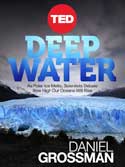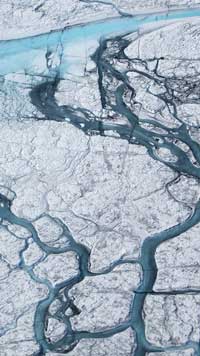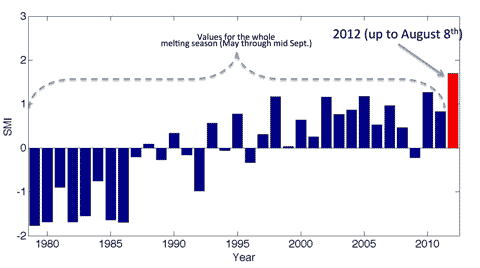 At last it can be revealed — the project that’s been swallowing most of my writing time over the last year. The Aviator is a work of speculative fiction ((Which I have sometimes described as a science fiction adventure comedy satire, or, via a tweet of Margaret Atwood’s, cli-fi.)), the first in a series set in The Burning World, and it’s my first foray into extended fiction — in which a plot idea borrowed from a bloke called Swift is wrapped around a dystopian vision of a climate-changed near future, all garnished with tales of strange people with even stranger ideas. This is how the great NZ comics artist Dylan Horrocks, who provided the book’s magnificent cover, describes it:
At last it can be revealed — the project that’s been swallowing most of my writing time over the last year. The Aviator is a work of speculative fiction ((Which I have sometimes described as a science fiction adventure comedy satire, or, via a tweet of Margaret Atwood’s, cli-fi.)), the first in a series set in The Burning World, and it’s my first foray into extended fiction — in which a plot idea borrowed from a bloke called Swift is wrapped around a dystopian vision of a climate-changed near future, all garnished with tales of strange people with even stranger ideas. This is how the great NZ comics artist Dylan Horrocks, who provided the book’s magnificent cover, describes it:
The Aviator is a light-hearted journey (by state-of-the-art airship) around a world transformed by climate change and subsequent political collapse. Rock God Evangelists, super-rich survivalists, back-to-nature primitivists, heavily armed luddites, goats with the secret of eternal youth, and a horny artificial intelligence with a taste for bluegrass and classic Hollywood films; The Aviator is a Gulliver-esque romp through a future we hope won’t come to pass.
I’m grateful to Mike Mann (yes, that one) for a generous note of approbation, and to sci-fi author ((And regular HT reader.)) Sonny Whitelaw for describing it as “a brilliant and wickedly satirical romp.” The first extended review — by my fellow sciblogger Ken Perrott of Open Parachute — has just been published, and provides an interesting and very positive take on what I’ve been up to.
The Aviator is currently available via Amazon for Kindle readers, and as an epub for other devices. You can download a free sample of the book — roughly 10% of the 100,000 word total — at Amazon. Editions for sale via Apple’s iBooks, Barnes & Noble and Kobo are in the works, and a paperback edition will be available in September. All digital editions are DRM free. When the publishing process is done and dusted, and I’ve stopped jumping through promotional hoops, I’ll be starting on book two. I have lots of ideas I want to explore from the vantage point of Thunderbird (the airship), if she’ll let me.
Buy now:


 The title to this post may seem like an odd question, but I think it is an inescapable one, as I hope to demonstrate. The US Department of Agriculture has a mandate for a
The title to this post may seem like an odd question, but I think it is an inescapable one, as I hope to demonstrate. The US Department of Agriculture has a mandate for a  Greenland’s amazing summer continues, with news today that the ice sheet has already set a new record for surface melting — with four weeks of the melt season still to run. The ice sheet surpassed the previous record year, 2010, on August 8th.
Greenland’s amazing summer continues, with news today that the ice sheet has already set a new record for surface melting — with four weeks of the melt season still to run. The ice sheet surpassed the previous record year, 2010, on August 8th. 
 MP Nick Smith in a NZ Herald
MP Nick Smith in a NZ Herald